Press Release | March 31, 2018
Tire Talk
Brought to you by Continental Tires
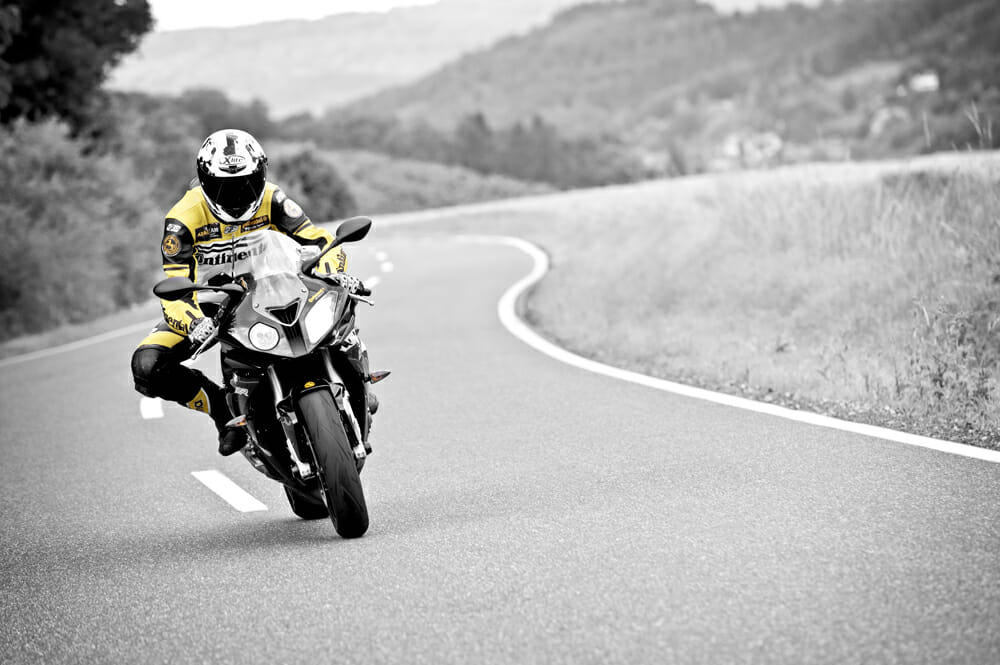
Today we are going to delve deep inside of your motorcycle tires and specifically explain the difference between Radial and Bias-Ply tires.
A tire is not only made of rubber, it has an internal structure that acts as a skeleton, or a chassis. If it didn’t, it wouldn’t be able to contain the internal pressure and would tear apart.
To provide insight, we can zoom inside and see the cross section of a radial tire, ContiSportAttack 2 .
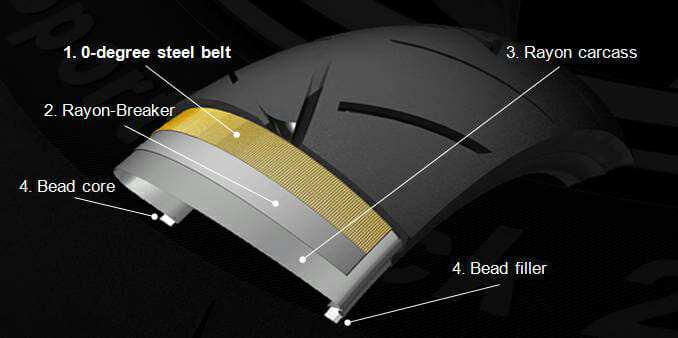
1st and 2nd are reinforcement layers that provide stability to the tire. 3rd is the carcass that provides stiffness to the tire structure and holds the air located inside the tire and the rim when it is tubeless. 4th are the bead wires, two circular covered steel wires that provide strength and provide an air tight seal with the rim.
The materials used for the body cords are usually fabrics like: rayon, nylon, carbon fiber, and metals like steel.
Let’s start with some history about motorcycle tires. The first tires in the market were the bias-ply construction type. Back then, vehicles were much heavier than today, and all of them used high profile tires. For these reasons bias-ply tires were a good option because they provide reinforced structures with a high number of body plies to provide extra strength/reinforcement.
During the old days, bias-ply tires required a lot of plies, which contributed a lot of weight. The layers created a lot of friction that could cause the tire to tear apart. This limited the speeds that they could safely operate at.
Through the years, newer and lighter bias-ply tires were developed until the day when radial carcass tires were created. With this new kind of tire construction, a stronger structure was achieved even on lower profile tires. Nowadays both types of construction are still used; basically one is used over the other depending on the kind of usage for the tires.
- A) Radials:Road Tires or light trail for light motorcycles-wide transversal tires with low profile.
- B) Bias-ply tires:Road Tires, trail or off-road (Motocross, Enduro, etc) for motorcycles with narrow rims and high profile.
The definition of radials and bias-ply tires is very surreal. The meaning comes from its layers and orientations.
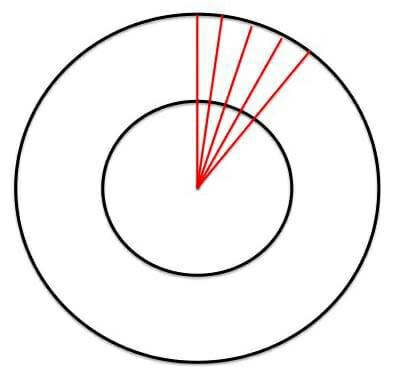
In this illustration, we can see the layers layout for a radial carcass. They start from the center and go through the exterior circumference (radius).
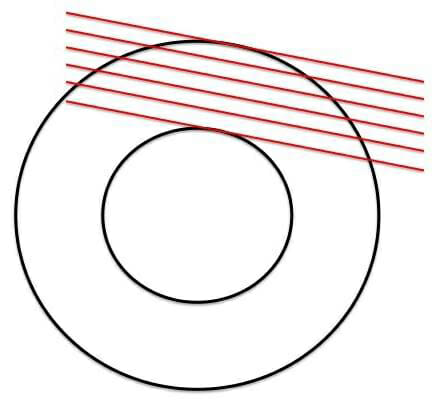
In this illustration, we can see the layout of the layers in the bias-ply tires, where we can see that a diagonal line would be formed if they came from across the center of the tire.
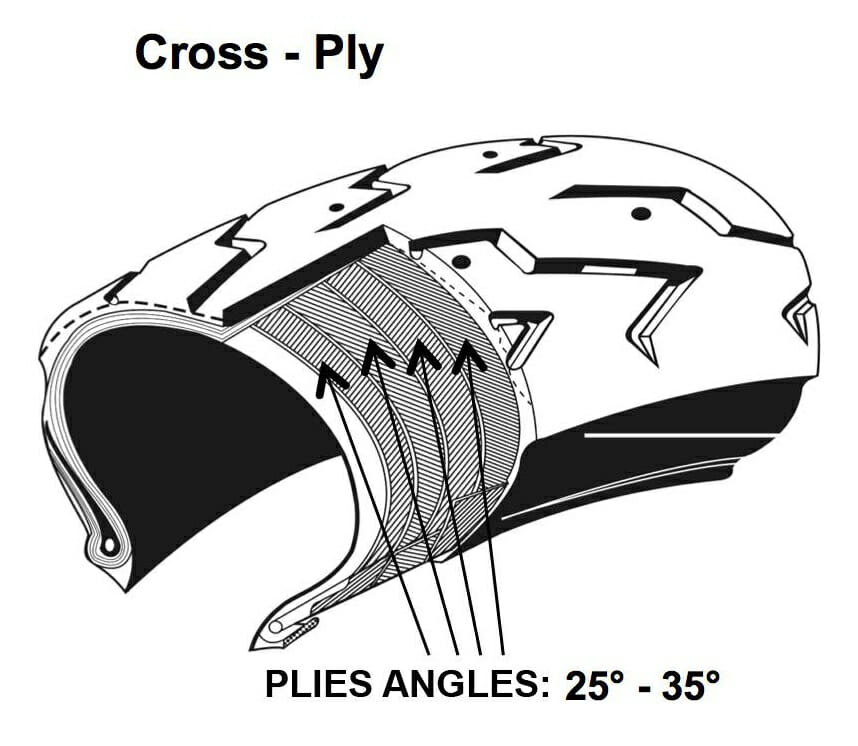
As we mentioned before, through the years, materials and new techniques of construction have evolved. The bias-ply tires of the past only had “cross ply” made of rayon and nylon.
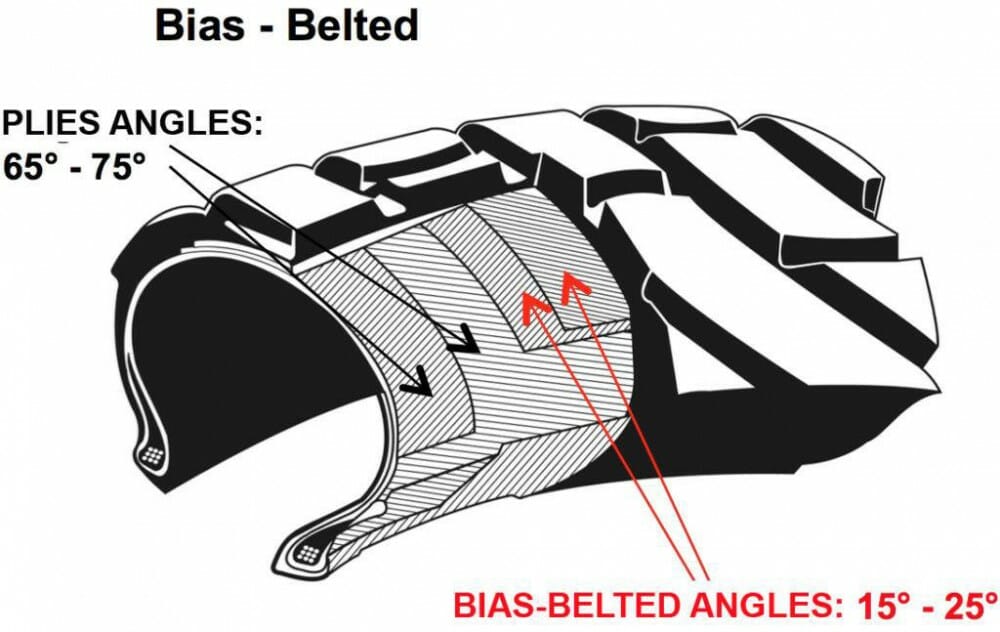
Today they have evolved to become a bias-ply with belts. In this tire construction, the body plies are crossed through the carcass and new layers to provide stability are added between those body plies and under the tire tread. These “belts” layers provide the rider more stability while riding. These kinds of belts are usually made of Kevlar.
Radial tires have also evolved through the years always with the premise/goal in mind of “weight reduction” and “stronger structure”.
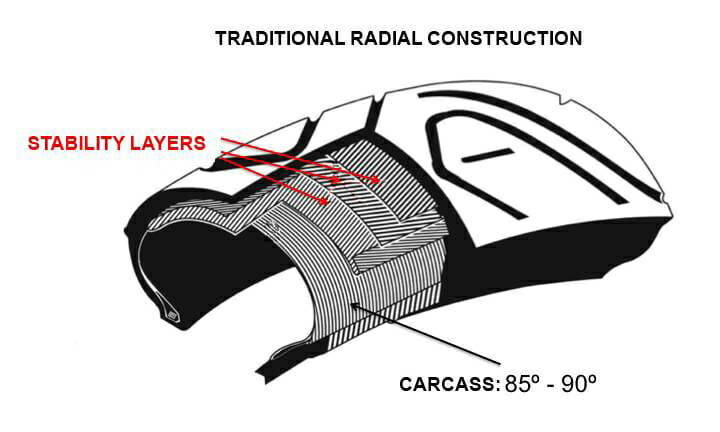
Frequently used in cars and trucks, traditional radial tire construction has a radial carcass and a serial of layers for stabilization above it, to give more strength and comfort while riding.
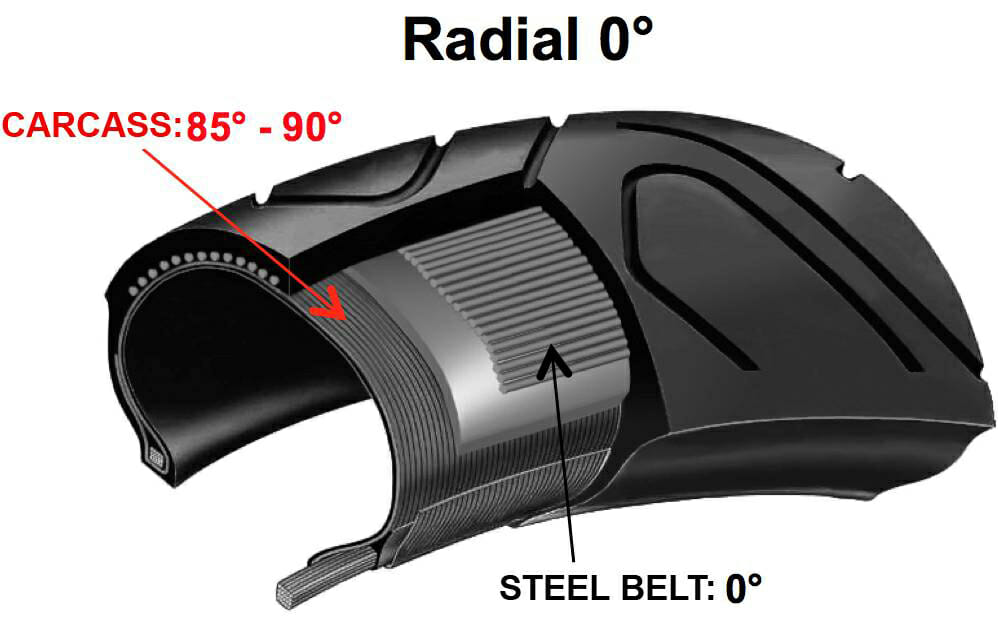
The last one we have to show is the radial called: ZeroDegree belt. It is the most modern with a lighter structure. It is based with the radial layer of the carcass and a steel belt made with continued wire that surrounds the tire above the radial carcass with a circumferential shape.
If you want to know if you have Radial or Bias-ply tires on your motorcycle, look at the information on the tire’s sidewall.
Radial tire example: 120/70 ZR 17. The “R” means that it has a radial carcass.
Bias-ply tire example: 150/70 B 17 or 150/70 – 17. The “B” or the “-“ dash means that the carcass is bias-ply.
We hope that this helps you better understand the differences between Radial and Bias-Ply tires.
Learn more at https://www.facebook.com/contimotousa/”
For more information on Continental motorcycle tires, please visit: www.ContiMotoUSAblog.com